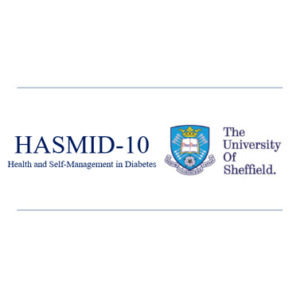The HASMID-10 identifies Eight management attributes. The three attributes from the DHP and energy for the attributes designed to capture HRQoL, and the four attributes identified from the patient interviews cover self-management, resulting in the following eight attributes for inclusion in the questionnaire.
1.Mood
2.Hypoglycaemic attacks
3.Social Limitations
4.Energy
5.Control
6.Hassle
7.Stress
8.Support
Four of these self-management attributes (Control, Hassle, Stress + Support) were selected with four health attributes; mood, fear about hypos (hypoglycaemic episodes), energy and social limitations.
^ Back to top



